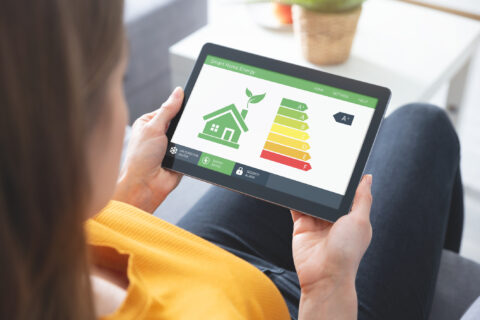Last year, we talked to Stephan Gans, Chief Insights and Analytics Officer at PepsiCo, about how insights were keeping the company abreast of consumers’ attitudes during the COVID-19 pandemic and lockdown.
Gans talked about a transformation in his team’s ways of working with a global digital platform housing often-used research tools and the roll-out of those tools accelerating throughout the company. The pandemic was speeding up global alignment of ways of doing research and a standardization of tools.
We catch up with Gans to ask him about changes in managing insights as markets in Europe and the US begin to open up.
Now that some markets are opening up, which options are you exploring with regard to how you work with your team?
PepsiCo has to adapt to the situation in different markets, which is still very varied. Even in the US, which is our biggest market, there are a lot of local considerations.
The company has a revamped approach called Work that Works. It’s a hybrid model aimed at keeping the benefits of remote working whilst reigniting the benefits of seeing each other. For instance, the office will be more important than ever for creative sessions, celebrations and occasions where we want to connect with colleagues. Decisions about the best ways of working, and what needs to be done in the office and what can be done remotely, will be made by managers and teams.
I expect that the global insights team and I will be in the Purchase, New York global headquarters two or three days a week and continue to work remotely for the rest of the week. From a broader perspective, if I look at the journey of our insights function, this is part of the development for commercial functions within PepsiCo, where we are building globally standardized capabilities that are enabling more flexible ways of working in all our markets. We will continue to standardize our ways of working, to reap the benefits of our skills in the different parts of our consumer insights work, while ensuring that the tools are effective in finding and mining local consumer insights in our key markets. So, we are using global tools for local insights.
Are there any changes with regard to the types of work you commission?
We have learned a lot in the last year about consumers and consumer trends, with many existing trends accelerating because of the pandemic.
For instance, online grocery shopping was already growing and that growth has accelerated. You see that also in the adoption of digital tools and digital ways of doing research where possible. We are working smarter using technology and that goes not only for us, but also for our business partners like Kantar. And then, the technology companies that we partner with, like Black Swan, Zappi and Big Sofa, are accelerating more efficient ways of doing consumer research.
Have you seen major shifts in consumer behavior as the hospitality sector reopens in the US or in Europe?
A lot of hospitality is re-opening and things are changing every day so it’s difficult to predict exactly what’s going to happen. What we see is a resurgence of people’s mobility in the US, with mostly domestic travel and hotel bookings, although many are still reluctant to travel. Travel will grow steadily, but it will take a while for that sector to return to pre-pandemic levels of activity.
For instance, PepsiCo’s new workplace policy, which impacts a lot of people, and similar policies of other organizations, mean that a lot more people will still be working from home, so there will be less snacks in the train and drinks on the way to work. There are structural aspects of consumer behavior change that will impact the resurgence of the away from home sector.
How can the research keep up with ongoing changes like the worldwide spread of the Delta variant?
We stick to our policies of utmost care and prudence with face-to-face research. We have not resumed doing this apart from some isolated work in a few markets. It’s difficult to predict how far we will return to it.
We have found smarter ways of doing behavioral research with, for example, embedded video cameras with families who volunteer to participate in that type of research. And big data analytics capabilities enable us to build empathy at scale using video. This makes a lot of the in-person accompanied shopping or in-home interviews obsolete. Technology is helping us to stay resilient in the face of the day-to-day changes.
Are you seeing more people doing online shopping, even in categories that weren’t traditionally online?
Yes absolutely. You can order online and have it delivered or order online and pick it up at a store, so online ordering comes in many forms. I recently read about significant investments that one of our retail partners is making in further building and accelerating their e-commerce capabilities. The train of online grocery shopping left the station a decade ago, but it’s growing at an accelerated pace and when large companies, including PepsiCo, are actively investing in those capabilities, this trend will not lose speed in the years ahead.
How well do clients understand the crossover between online and instore purchases and customers’ motivations and decision-making in this area?
We are thinking about this a lot. For instance, energy bars have an incredibly high percentage of e-commerce sales of the total business that is a lot lower for example, for our savory snacks business. We have some understanding about why this is and will grow this understanding, which is one reason why we started direct to consumer e-commerce initiatives to test and learn, such as snacks.com, an online place where you can buy your favorite Frito-Lay snack brands. This is growing steadily and helps us build understanding from consumers about their shopping habits that can then be applied within a brick-and-mortar store.
In observing people ordering online categories which are traditionally instore, are you having to build up new theories about consumer behavior?
We see consumer behavior changing, but the fundamental drivers of consumer behavior remain. I don’t think fundamental theories like Ehrenberg Bass, explaining how to predict brand growth, brand performance and penetration, will necessarily change.
What is changing is the way a brand needs to ensure it is physically and mentally present at the right point of time in the most relevant way, and this is different in a world with more online retail. Our brand teams are thinking this through and each business requires a tailor-made solution as they each have different types of consumption patterns.
Are the changes in social and cause related awareness impacting research?
It’s impacting the purposeful positioning of our brands and the way PepsiCo is developing and deploying its sustainability and equality strategies. This does not necessarily impact the way we do research, but we are researching a different range of topics in how we tell the brand story.
For instance, there’s a huge effort underway in sustainable agriculture and recycling of plastics. In my LinkedIn profile, you can find a reference to the Lay’s Relay initiative where we’ve partnered with the UEFA Foundation for children and streetfootballworld to reuse empty chip packs to help create sustainable football pitches, uniting communities and driving positive outcomes for people and the planet. A lot of work is going into this as part of our sustainability journey, but also the consumer is asking for it.
Research and diversity are a big topic for the research sector: is that impacting your team in how you set research and what you’re researching?
It always has impacted the composition of my team. What we research often follows the growth strategy of our brands. Looking at North America, for example, the population is becoming much more diverse. There is a lot to be learned about the different brand and cultural preferences of various groups, for instance the Hispanic food consumers in North America. This population is an increasingly important part of North America and its culture and is far from being a homogeneous group.
With each of our brand teams, we are thinking through what that means for the research, how we can understand what those cohorts in the population are really looking for and whether we can make projections for the longer term.
Last year you said that research and insights have never been more important in terms of understanding changing consumers. Will that remain for the coming year?
There’s definitely an increased understanding across companies of the fact that consumer centric commercial decision-making is crucial and a prerequisite for having any realistic shot at building a sustainable business.
For instance, why did the Super League Soccer initiative in Europe fail spectacularly? It was the opposite of being consumer centric. The people who took the initiative, with all their corporate power, money and experience in this space, overlooked the fact that if consumers are not interested, they’re not going to buy it. People actually went into the streets and protested that their football was being taken away.
The guidance I get from our CEO Ramon Laguarta is to be the eyes and ears of the company. And that is a very interesting brief and a testimony to the fact that consumer insights provide a crucial set of capabilities for PepsiCo.
Previously someone in your role would have been traveling around the world keeping track of what was happening in the different markets. Will that return in the future?
I think that in the longer term it is truly necessary for at least the global part of my team to be able to travel and work out of different offices. Even if the global team is not all sitting in our corporate headquarters, it’s still very important to be able to visit different markets and work for a couple of days with the teams in Moscow, Dallas or Mexico City. I hope this becomes safe and we can resume this type of travel in the near future.


